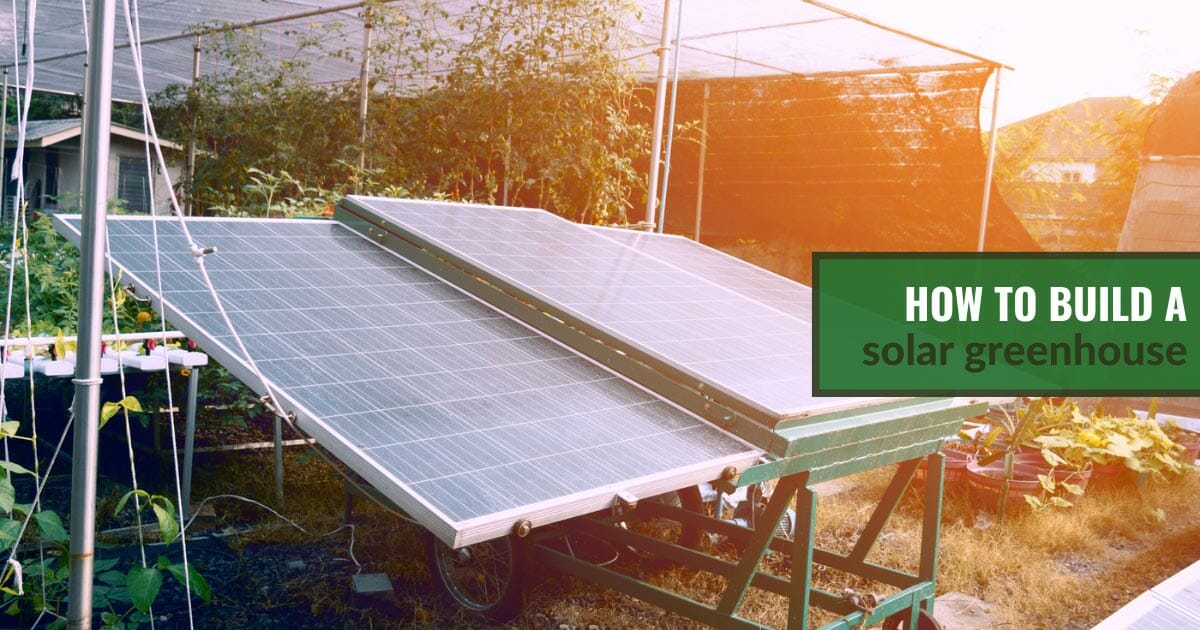
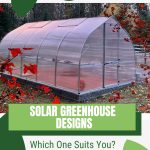


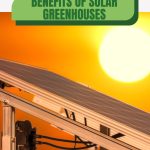
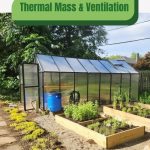
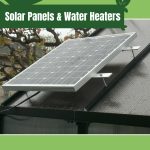
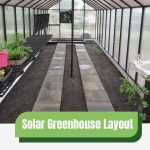
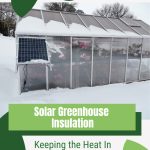
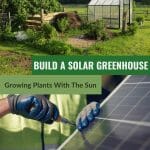
Building in an environmentally friendly and sustainable way is more important now than ever, and solar power is leading the way.
If you want to build a solar greenhouse, you’ve taken the important first step in making a positive difference in the world. Using your solar greenhouse to grow fruit and veggies also means that you remove yourself from the fossil fuel chain that’s so heavily involved in modern agriculture.

While it might seem difficult or labor-intensive, it’s well worth the effort. Read on to discover out everything you need to know and find out if a solar greenhouse is right for you.
Understanding solar greenhouses
What is a solar greenhouse?
Solar greenhouses harness and maximize the power of the sun to create an optimal environment for plant growth.
Unlike traditional greenhouses that rely on external energy sources for heating and lighting, solar greenhouses utilize passive solar techniques to maintain temperature and provide natural light.
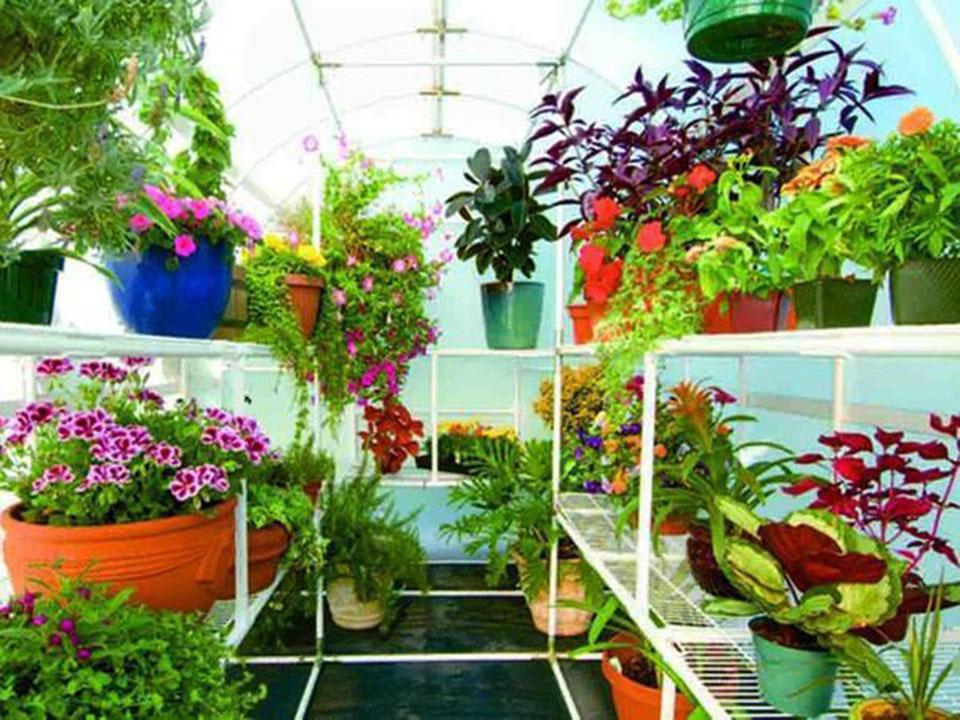
The main principle behind a solar greenhouse is to capture and retain solar energy to create a sustainable and energy-efficient gardening space.
How solar greenhouses utilize solar energy
Solar greenhouses use various strategies to harness solar energy effectively:
Orientation
The greenhouse is positioned to face the sun’s path, maximizing exposure to sunlight throughout the day. The direction that your greenhouse faces plays a huge role in the ambient temperature and light levels in the structure.
Glazing materials
Transparent or translucent materials, such as glass or polycarbonate, are used for the greenhouse walls and roof to allow sunlight to penetrate while minimizing heat loss.
Thermal mass
Materials with high heat storage capacity, such as water barrels or concrete floors, are strategically placed inside the greenhouse to absorb and store solar heat during the day, releasing it at night to maintain a stable temperature.
Ventilation
Properly designed ventilation systems allow for controlled airflow, preventing overheating and excessive humidity. Ventilation also aids in preventing the buildup of harmful gases that could cause disease.
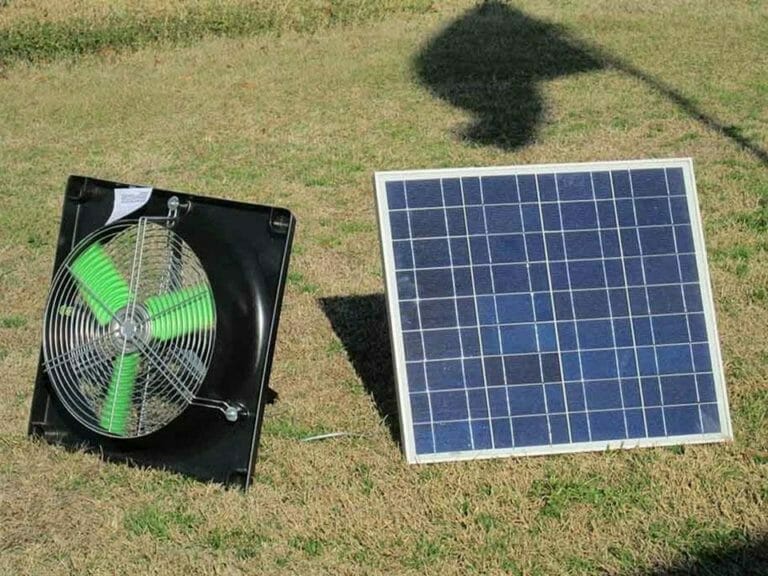
To keep your greenhouse entirely self-sustaining, you can get solar-powered ventilation systems. Our MONT Solar Powered Ventilation System runs through a deep-cycle marine battery to keep air flowing throughout the year.
Insulation
Adequate insulation, including insulation panels or curtains, is necessary to minimize heat loss during colder months.
Benefits of solar greenhouses for year-round gardening
Solar greenhouses offer several advantages for year-round gardening:
Extended growing season
Solar greenhouses provide a controlled environment that allows for the cultivation of plants beyond their typical growing season, enabling year-round production and harvest of crops.
Energy efficiency
By relying on passive solar techniques, solar greenhouses significantly reduce your dependence on fossil fuel energy for heating and lighting, resulting in lower energy costs and a smaller carbon footprint.
Environmental sustainability
Solar greenhouses promote sustainable gardening practices by utilizing renewable energy and minimizing reliance on fossil fuels. What’s more, they are a more sustainable food system by reducing transportation distances and pesticide usage.
Improved plant health and yield
Solar greenhouses provide optimal growing conditions for your plants. This results in healthier plants and increased crop yield. With the right setup and plant selection, you could theoretically produce all the fruit and veggies you need throughout the year.
Versatility
Solar greenhouses accommodate a wide range of plants, from vegetables and herbs to flowers and exotic species, providing flexibility in gardening and allowing experimentation with different varieties.
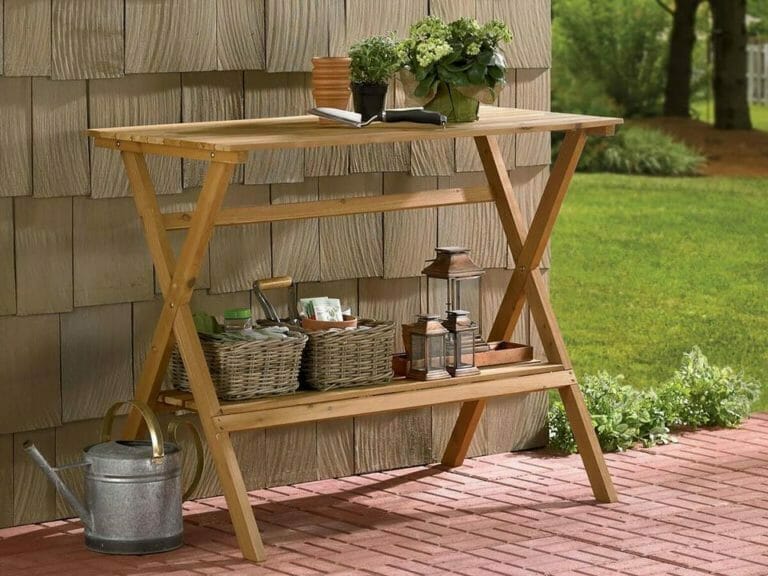
Types of solar greenhouse designs
There are various designs of solar greenhouses, each with its unique features and advantages:
Attached solar greenhouse
This type of greenhouse is built against an existing structure, such as a house or barn, sharing a wall for thermal insulation and easy access.
Freestanding solar greenhouse
A standalone structure separate from other buildings, allowing for optimal sunlight exposure from all sides.
Earth-sheltered solar greenhouse
Partially or fully buried into the ground, these greenhouses benefit from the earth’s natural insulation, maintaining a more stable temperature throughout the year.
Passive solar greenhouse
Designed with optimal solar orientation, glazing, and thermal mass, passive solar greenhouses rely solely on natural convection and heat transfer without the use of mechanical systems.
Hybrid solar greenhouse
Combining active solar technologies, such as solar panels and fans, with passive strategies, hybrid solar greenhouses provide additional control and energy efficiency while still utilizing natural sunlight as the primary energy source.
Planning and designing your solar greenhouse
Assessing the available space and location
Before embarking on building a solar greenhouse, it’s essential to evaluate the available space and select an appropriate location. Consider the following factors:
Sunlight exposure
Choose a location that receives maximum sunlight throughout the day, ideally facing south or southeast for optimal solar exposure.
Access and convenience
Ensure easy access to the greenhouse for maintenance, watering, and harvesting. Consider proximity to a water source and availability of utilities if required.
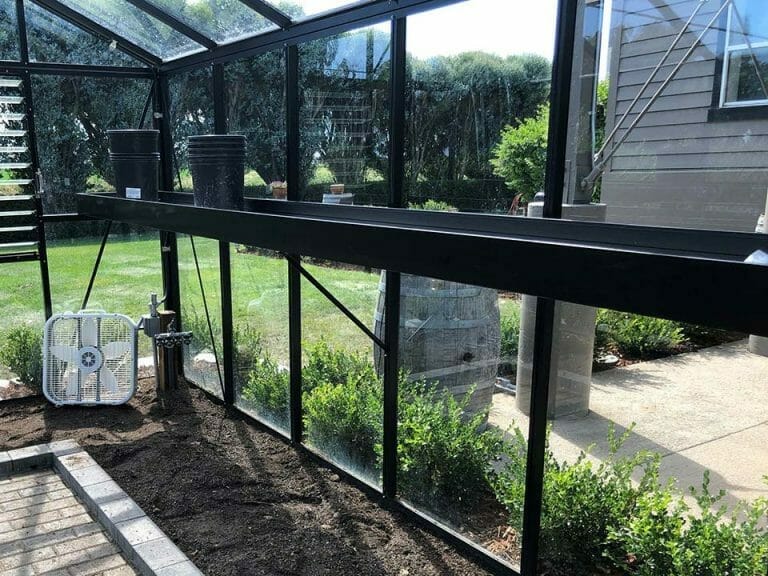
This is also where planning the optimal layout of your greenhouse comes in. Planning your greenhouse shelves and benches, walkways, and storage space is key to getting the most from your solar greenhouse.
A staggered, vertical workspace like our shelving options for Riga Greenhouses is the best way to optimize your solar greenhouse’s efficiency.
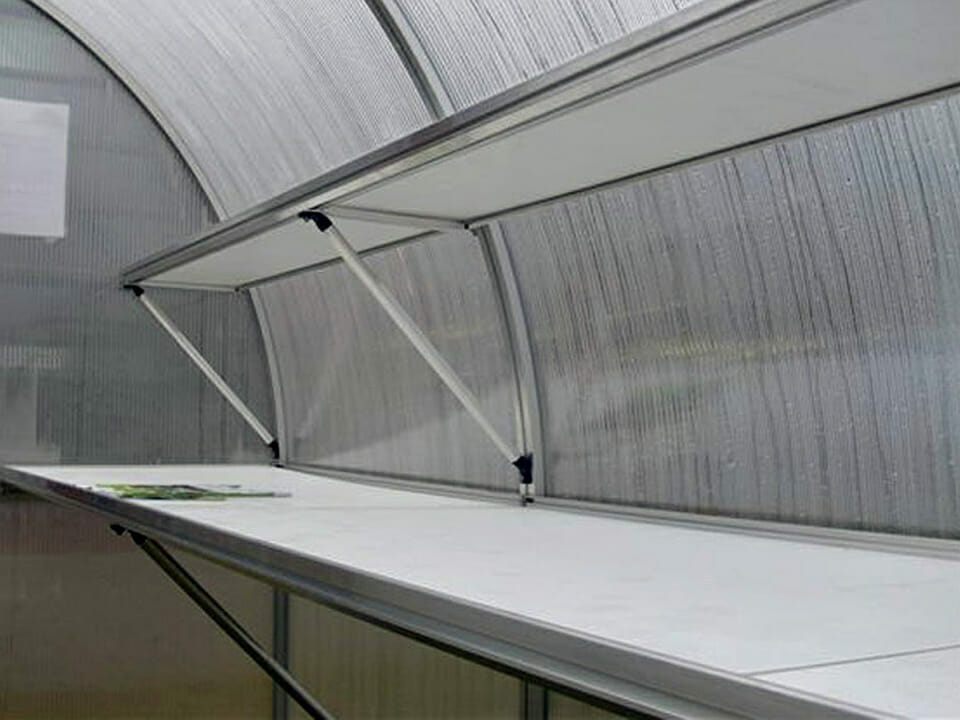
Surrounding obstructions
Take note of any nearby trees, buildings, or structures that may cast shadows on the greenhouse and obstruct sunlight. Aim for an open and unobstructed area.
Determining the size and shape of the greenhouse
The dimensions of your greenhouse depend on factors such as available space, intended use, and budget. Consider the following aspects:
Available space
Measure the dimensions of the available area and determine the maximum size the greenhouse can be without overcrowding or obstructing pathways.
Intended use
Consider the types of plants you wish to grow and the space required for their optimal growth. Factor in pathways, work areas, and potential storage needs.
If you’re planning on building an aquaponics greenhouse, you’re going to need to allow more space for power generation to keep the water systems running properly. You also need to make sure you have ample storage capacity so your pumps, filters, and heaters will operate over the shadier months.
Budget
Determine a budget for the greenhouse project, as larger structures may require more materials and resources. Find a balance between size and affordability.
Selecting appropriate materials for construction
Choosing the right materials for your solar greenhouse is crucial for its durability, energy efficiency, and functionality. Consider the following options:
Glazing materials
Select high-quality, transparent, or translucent materials such as glass, polycarbonate, or greenhouse-grade plastic. These materials allow sunlight to penetrate while providing insulation and minimizing heat loss.
Frame materials
Common options for greenhouse frames include aluminum, wood, or galvanized steel. Each material has its pros and cons in terms of cost, strength, durability, and maintenance requirements.

Insulation
Ensure proper insulation to minimize heat loss during colder months. Insulation panels, bubble wrap, or double glazing can be used to enhance thermal efficiency.
Flooring
Choose a flooring material that is easy to clean, provides good drainage, and offers thermal insulation. Options include concrete, gravel, or raised beds.
Planning the layout for optimal sunlight exposure
Proper planning of the greenhouse layout is crucial to maximize sunlight exposure for plant growth. Consider the following tips:
Orientation
Position the greenhouse with the longest side facing south to capture the most sunlight throughout the day.
Shading and overhangs
Design the greenhouse with shading devices or overhangs to prevent excessive heat buildup during the summer months while still allowing sufficient sunlight penetration.
Plant placement
Plan the layout of plants, benches, and shelves inside the greenhouse, ensuring that taller plants or structures do not shade smaller ones from sunlight.
Ventilation and windows
Incorporate strategically placed windows, vents, or louvers to facilitate proper airflow and prevent overheating. Consider adjustable features to control ventilation based on temperature and humidity.
Careful planning and designing of your solar greenhouse will lay the foundation for a functional and efficient gardening space. Assess the available space, determine the appropriate size and shape, select suitable materials, and plan the layout to optimize sunlight exposure for successful plant growth.
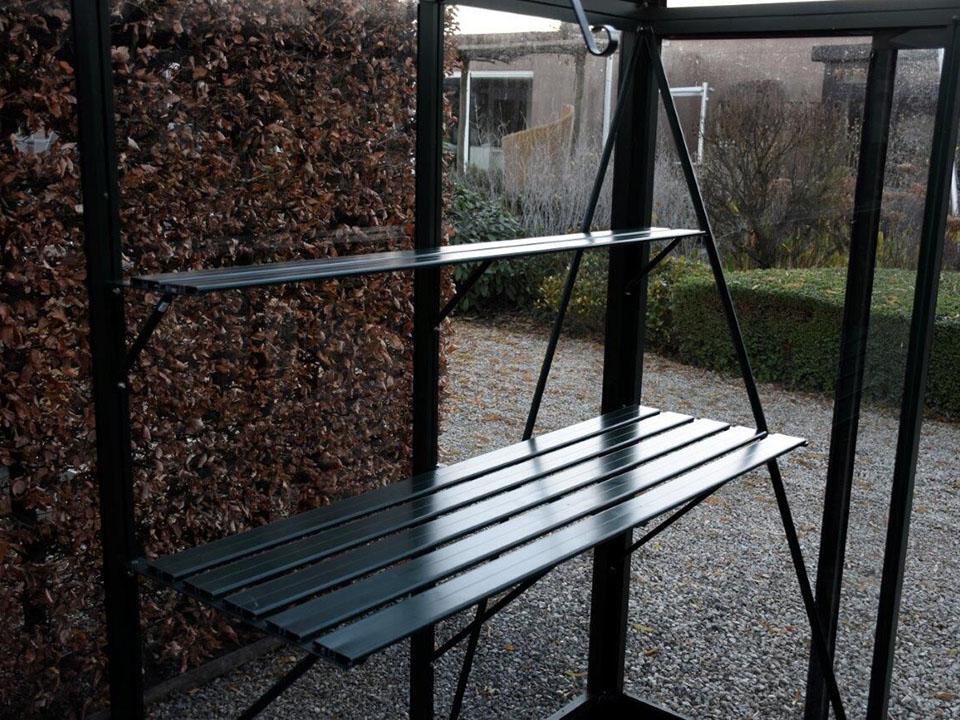
Installing solar features
Selecting the right glazing material for energy efficiency
The choice of glazing material for your solar greenhouse plays a crucial role in maintaining energy efficiency and maximizing sunlight penetration.
Consider the following factors:
Transparency and light transmission
Opt for glazing materials with high transparency and light transmission to allow maximum sunlight into the greenhouse. Clear glass or high-quality polycarbonate are popular choices.
Insulation properties
Look for glazing materials with good insulation properties to minimize heat loss during colder periods. Double or triple-pane insulated glass or multi-wall polycarbonate can provide better thermal insulation.
Durability and longevity
Consider the durability and longevity of the glazing material, especially in terms of weather resistance, impact resistance, and UV stability.
Incorporating solar panels for electricity generation
Solar panels are an excellent addition to your solar greenhouse, allowing you to generate electricity to power various components, such as lighting, ventilation fans, and water circulation systems. Consider the following points:
Sizing and capacity
Determine the energy requirements of your greenhouse and calculate the appropriate size and capacity of solar panels needed to meet those needs. Consider factors such as available roof space and average sunlight hours in your area.
Mounting options
Explore different mounting options for solar panels, such as rooftop installation, ground-mounted systems, or adjustable tracking systems. Choose the option that provides optimal sun exposure and minimizes shading.
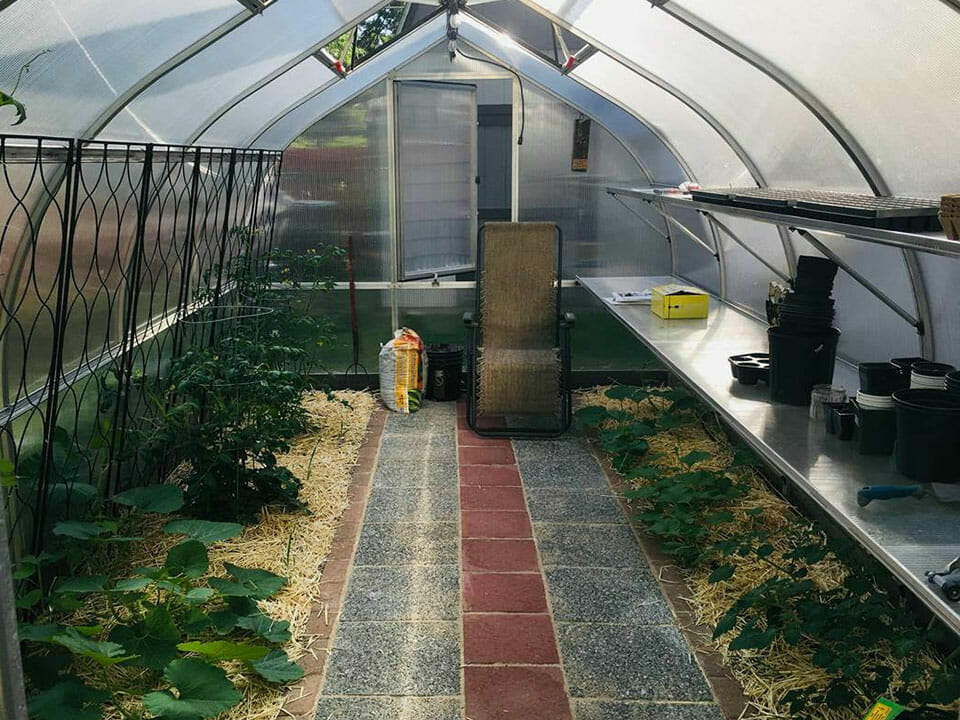
Electrical integration
Consult with a qualified electrician to ensure proper electrical integration of the solar panels into your greenhouse system. This includes connection to inverters, batteries (if using a storage system), and the main electrical grid, if applicable.
Installing solar water heaters for temperature regulation
Solar water heaters can regulate and maintain optimal temperatures within your greenhouse, providing a controlled climate for plant growth. Consider the following factors:
System design
Select a solar water heating system suitable for greenhouse applications, such as flat-plate collectors or evacuated tube collectors. These systems absorb solar energy to heat water, which can be circulated through pipes or radiators within the greenhouse.
Size and capacity
Determine the size and capacity of the solar water heater based on the volume of water needed to regulate the temperature effectively within the greenhouse. Consider the specific climate conditions and temperature requirements of your plants.
Circulation and control
Plan the circulation system for the heated water, ensuring proper distribution throughout the greenhouse. Incorporate temperature controls, such as thermostats or sensors, to regulate the water temperature based on the desired setpoints.
Utilizing thermal mass for heat storage
Thermal mass is an effective method for storing and releasing heat within a solar greenhouse, helping to maintain stable temperatures during day and night fluctuations. The materials your greenhouse is made of has a drastic effect on how well it gathers, stores, and releases heat throughout the day.
Consider the following strategies:
Material selection
Choose materials with high thermal mass, such as concrete, stone, or water barrels, to absorb and store heat during the day. These materials gradually release the stored heat over colder periods, which maintains a consistent temperature.
Placement and design
Position thermal mass elements, such as concrete floors or walls, throughout the greenhouse to maximize heat absorption and distribution. Consider placing them in areas with direct sunlight exposure for optimal heat collection.
Sizing and balance
Ensure the thermal mass elements are appropriately sized to match the greenhouse’s overall thermal requirements. Aim for a balance between the amount of thermal mass and the volume of the greenhouse to avoid excessive heat buildup or loss.
Installing solar features in your greenhouse, such as energy-efficient glazing, solar panels for electricity generation, solar water heaters for temperature regulation, and thermal mass for heat storage, enhances the sustainability and energy efficiency of your solar greenhouse. These features not only reduce reliance on external energy sources but also contribute to a more environmentally friendly and cost-effective gardening experience.
A note on soil and irrigation
Any gardener worth their salt knows that quality soil is key to getting healthy, high-yield plants. While greenhouses in general and solar greenhouses in particular have many benefits to soil quality, like pest and disease reduction and moisture retention, there are some factors we need to be aware of.
One of the most important things to remember is to refresh your top soil, normally about once a year, depending on what you’re growing. In an open garden, wind, rain, and land movement naturally cycle the soil, moving nitrogen-rich earth to the top where your plants can use it.
This doesn’t happen in a greenhouse, so you need to refresh the soil yourself. This can be a laborious process, but it’s worth the hard work to give your plants a good nutritional base to build from.
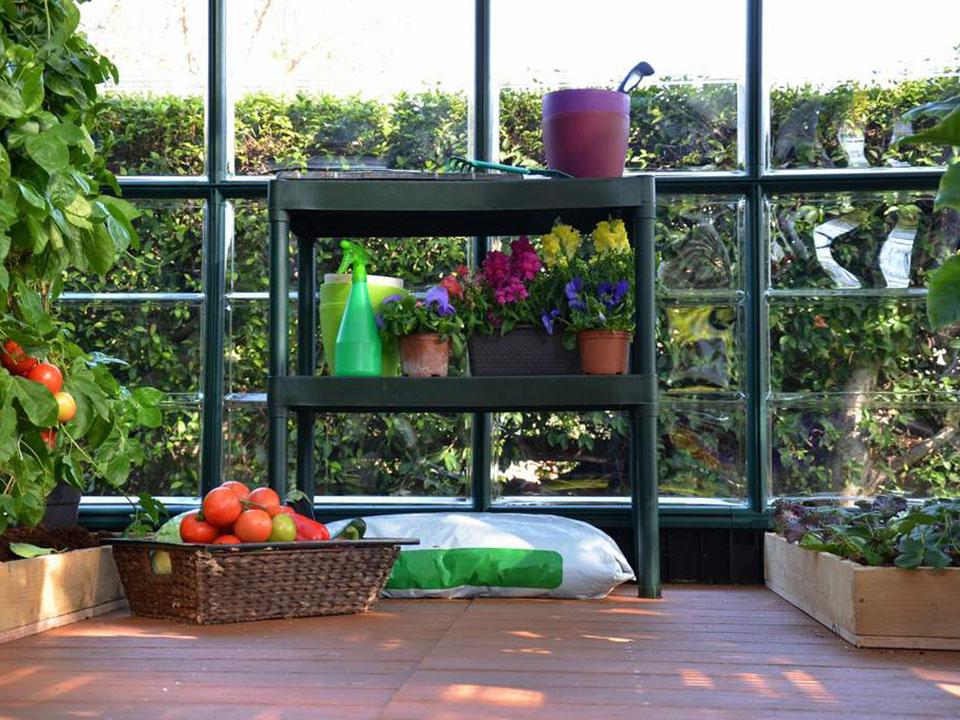
Another consideration, particularly for solar greenhouses, is moisture levels and mold. Since the ambient temperature of solar greenhouses is generally higher, water evaporates from the soil fairly rapidly. Since it’s an enclosed system, the water vapor can’t escape, making the greenhouse humid, which is good for your plants, but also an ideal growing condition for mold and fungi.
This is why ventilation and monitoring your humidity levels are so important. Keeping humidity below 85% should prevent most outbreaks of mold and fungi, but you should also take care not to overwater and allow your plants adequate space between them to allow air to circulate.
Embracing the solar movement
There are many different ways to build a solar greenhouse, and we’re sure that you’ve found at least one option here that covers your needs.
You also don’t have to commit to an entirely solar-powered greenhouse. From utilizing optimum positioning, thermal mass heat storage, or powering your greenhouse through solar panels, you can choose your level of commitment according to your budget and abilities.

